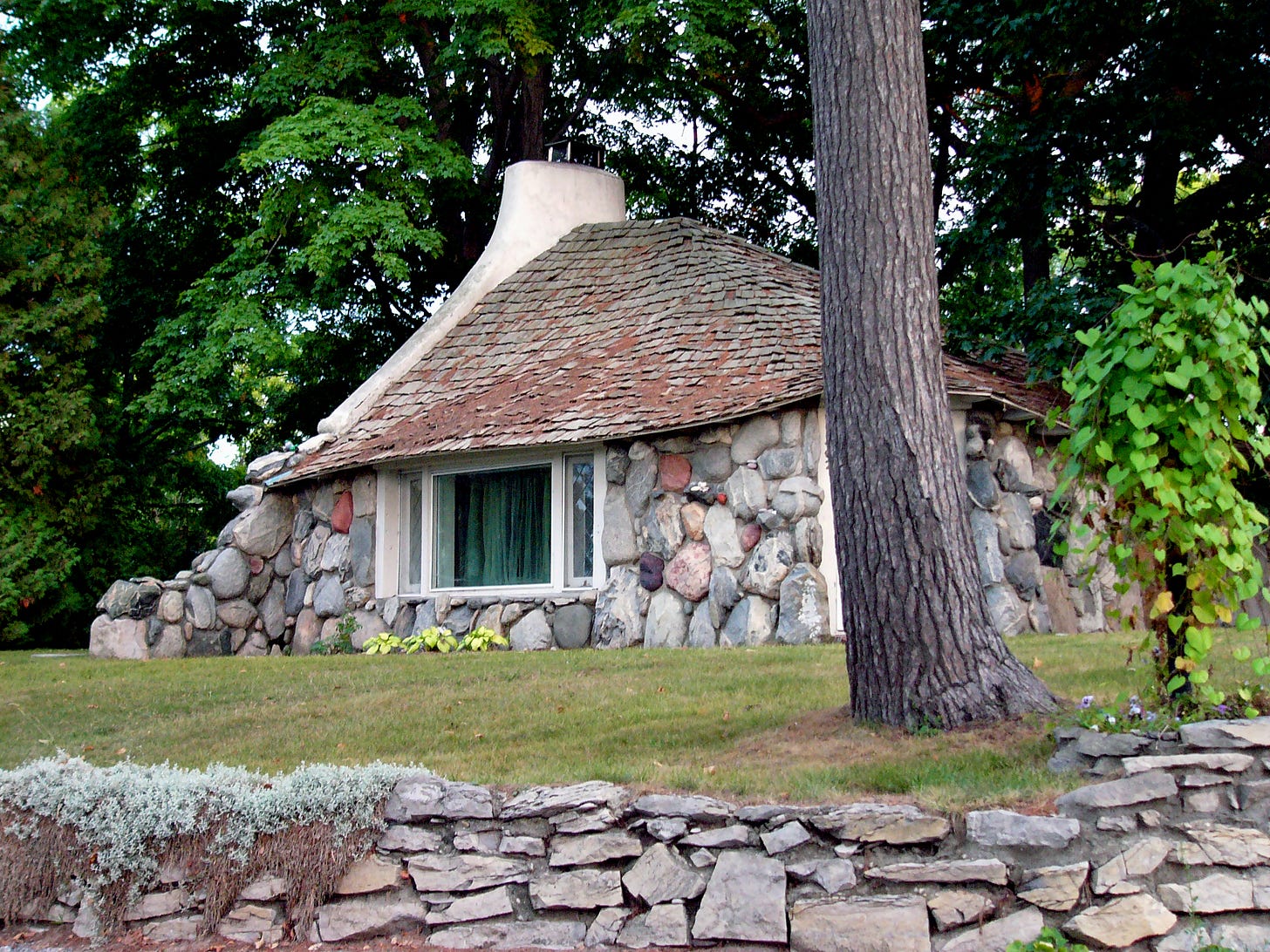This post was originally written in 2022 for the Daily Free Press. The column looked and felt a lot different back then. I’ve added some royalty-free photos to spice it up.
I’m on a little bit of a tourist town kick.
As discussed before, many towns in North America trend toward the same hodgepodge of the era’s most economical developmental styles, from brownstones in the 19th century to 5-over-1s today, resulting in the same combinations of things to love and hate about them.
I try to find the towns which avoid the financial pressure to conform, towns that successfully exert their own identity. It turns out that many such towns are, at least in part, tourist destinations. It could be that these cities leverage their one-of-a-kind-ness to attract tourist, or perhaps pre-existing tourism presents a city with more incentive for unorthodox development.
In any case, today I’m sharing Charlevoix (Shar-Le-Voy), Michigan. It’s a city of about two and a half thousand people on the Northwestern edge of the state, boasting quaint freshwater beaches, lakefront shopping and, most interestingly, a group of so-called “mushroom houses” with sloping thatch roofs and cobblestone walls that look like something from The Hobbit.
I visited Charlevoix in late August 2020, as a tiny-town escape from COVID-19. The town runs a ferry to Beaver Island — my ultimate destination that summer and perhaps the subject of a future article.
Crossing the U.S. Rout 31 lift bridge, whose blue-tinted sidewalks contort on the hour to give way to ferries and the occasional Great Lakes cargo ship, I walked along the lakeshore in search of the aforementioned mushroom houses. On Park Avenue, I saw it:
Built by Earl Young in the early 20th century, these homes feel wholly representative of the Northern Michigan region, and not just for their resemblance to old Finnish and Germanic cottages (common ancestry in Northern MI). Young felt it was important to design his buildings such that they compliment the natural surroundings, and through the use of natural and “rough-around-edges” building material, composed an architectural style that fits the wooded lakefront of Charlevoix.
The neighborhood along Park Avenue — named “Boulder Park” by Young — is clustered with similar houses utilizing the natural area as inspiration in their curved driveways and cobblestone finishings. Even greater for residents, these original mushroom houses are only a seven minute walk from downtown, an added bonus of Charlevoix’s small size, a quality it shares with many tourist towns.
With exceptions for the oldest parts of some larger East Coast cities, and Southwest mission towns, architectural styles in North America feel especially homogenized. It’s why we have the concept of Anytown, USA, and memes about Breezewood, PA. There’s an underlying cultural acknowledgement that North American small towns all have the same look and feel.
Our urban development patterns in this country, as a result of deep corporatization and large-scale expansion projects, have favored standardization over regional custom or livability and stripped housing and city streets of their humanity. Though this system at one point created accessible housing for many, we still crave to exist in places with meaning, history, and identity.
Suburbanites, those Breezewood-esque residents who make up over half the United States population, visit tourist towns because they offer that humanity. Cultural landmarks, pleasing architecture and walkable neighborhoods are still desired by the Anytown resident. It’s not mere artistic novelty either. We visit Tokyo and Paris and Boston’s North End because these places serve to represent collective social cohesion and triumph. Your strip mall surrounded by parking stands for little more than an engine for real estate profit (and even then, not for very long).
The works of Charlevoix’s Earl Young demonstrate that we shouldn’t have to travel around the world to find building styles that set themselves apart from the uninspired suburb.
Imagine a version of the U.S. where each state, or even each geographic region, created its own form of “mushroom house” style to be proud of. In a country where we value individuality to a fault, why have we settled for living in the same cookie-cutter houses as everyone else?







oh yea i remember those